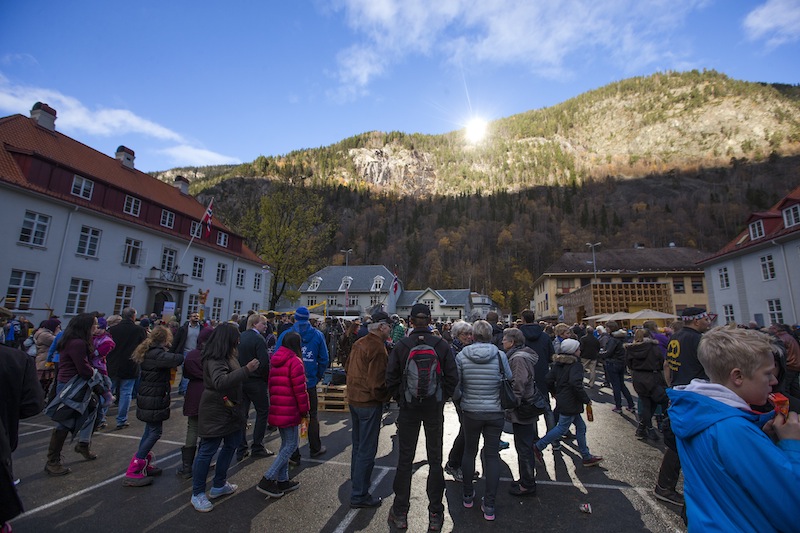STAVANGER, Norway (AP) — Residents of the small Norwegian town of Rjukan have finally seen the light.
Tucked in between steep mountains, the town is normally shrouded in shadow for almost six months a year, with residents having to catch a cable car to the top of a nearby precipice to get a fix of midday vitamin D.
But on Wednesday faint rays from the winter sun for the first time reached the town’s market square, thanks to three 183-square-foot (17-square-meter) mirrors placed on a mountain.

Cheering families, some on sun loungers, drinking cocktails and waving Norwegian flags, donned shades as the sun crept from behind a cloud to hit the mirrors and reflect down onto the faces of delighted children below.
TV footage of the event showed the center of the crowded square light up a touch, but not as if hit by direct sunlight. Still, residents said the effect was noticeable.
“Before when it was a fine day, you would see that the sky was blue and you knew that the sun was shining. But you couldn’t quite see it. It was very frustrating,” said Karin Roe, from the local tourist office. “This feels warm. When there is no time to get to the top of the mountains on weekdays, it will be lovely to come out for an hour and feel this warmth on my face.”
Like much of Scandinavia, the town of Rjukan often is freezing throughout the winter, but on Wednesday it was 45 degrees Fahrenheit (7 degrees Celsius) there.
The Italian town of Viganella has a similar, but smaller, sun mirror.
The plan to illuminate Rjukan was cooked up 100 years ago by the Norwegian industrialist Sam Eyde, who built the town to provide workers for a hydroelectric plant he located at the foot of a nearby waterfall.
The renowned engineer never saw his plan become reality, but his plant and the Telemark town he founded developed a special affection in the Norwegian imagination as the site of the country’s most famous wartime escapade.
Occupied by the Germans during World War II, the factory was a staging post in Hitler’s quest for the atomic bomb. The story of how 12 Norwegian saboteurs parachuted into the nearby tundra and survived freezing temperatures to destroy the factory’s “heavy water” plant inspired a 1965 Hollywood film, “The Heroes of Telemark,” and is being turned into a 10-part TV series by Oscar-winning director Danny Boyle.
In contrast to the shadow cast over Europe by Hitler’s plan for an atomic weapon, the three mirrors — ironically being remotely controlled from Germany — captured the sunlight and sent it in an ellipse that illuminated about one-third of the square below.
A band encouraged a cloud that weakened the effect to move away with the song, “Let The Sunshine In.”
Jan-Anders Dam-Nielsen, director of the Norwegian Industrial Museum, located on the site of the famous factory, said the solar experiment would mark another chapter in the history of Rjukan.
“Soon we will celebrate 70 years since the saboteurs struck the factory,” he said. “Then we will think about how we mark this. This is a really important day in the history of this town. And like the mirrors reflected the sun, we will reflect this in the museum.”
Helicoptered in and installed 1,500 feet (450 meters) above the town square, the 5 million kroner ($850,000) computer-controlled mirrors, or heliostats, are more commonly used to create solar power in sundrenched regions of the Middle East. Here, the solar energy the heliostats capture is used to power their tilting trajectory as they follow the sun’s brief dash across the Norwegian winter sky.
The century-old idea was revived in 2005 by Martin Andersen, an artist and resident of the town, who helped raise the sponsorship money. The lion’s share has come from Norsk Hydro — the company founded by Sam Eyde.
Copyright 2013 The Associated Press. All rights reserved. This material may not be published, broadcast, rewritten or redistributed.






